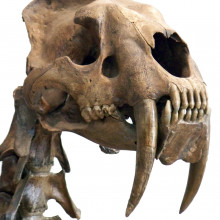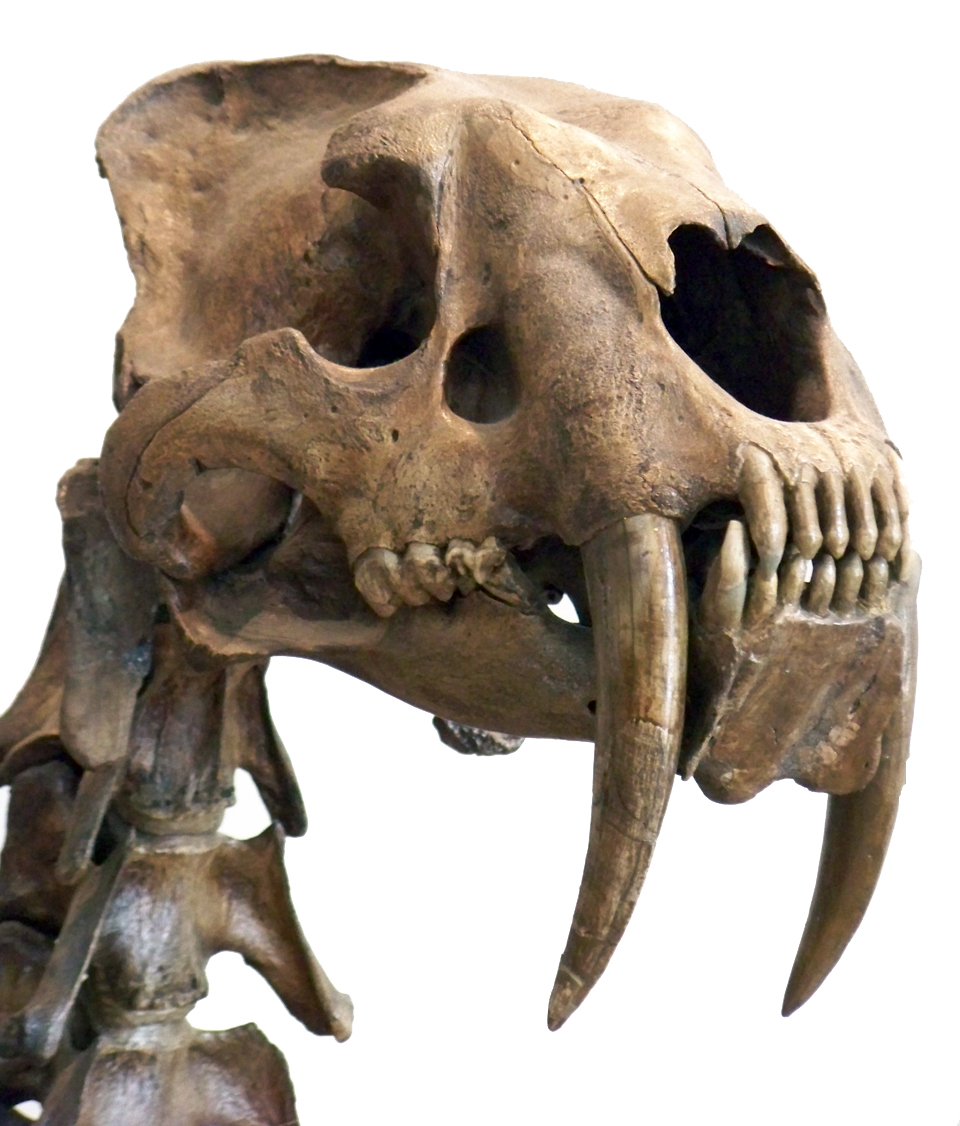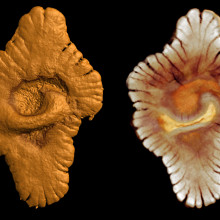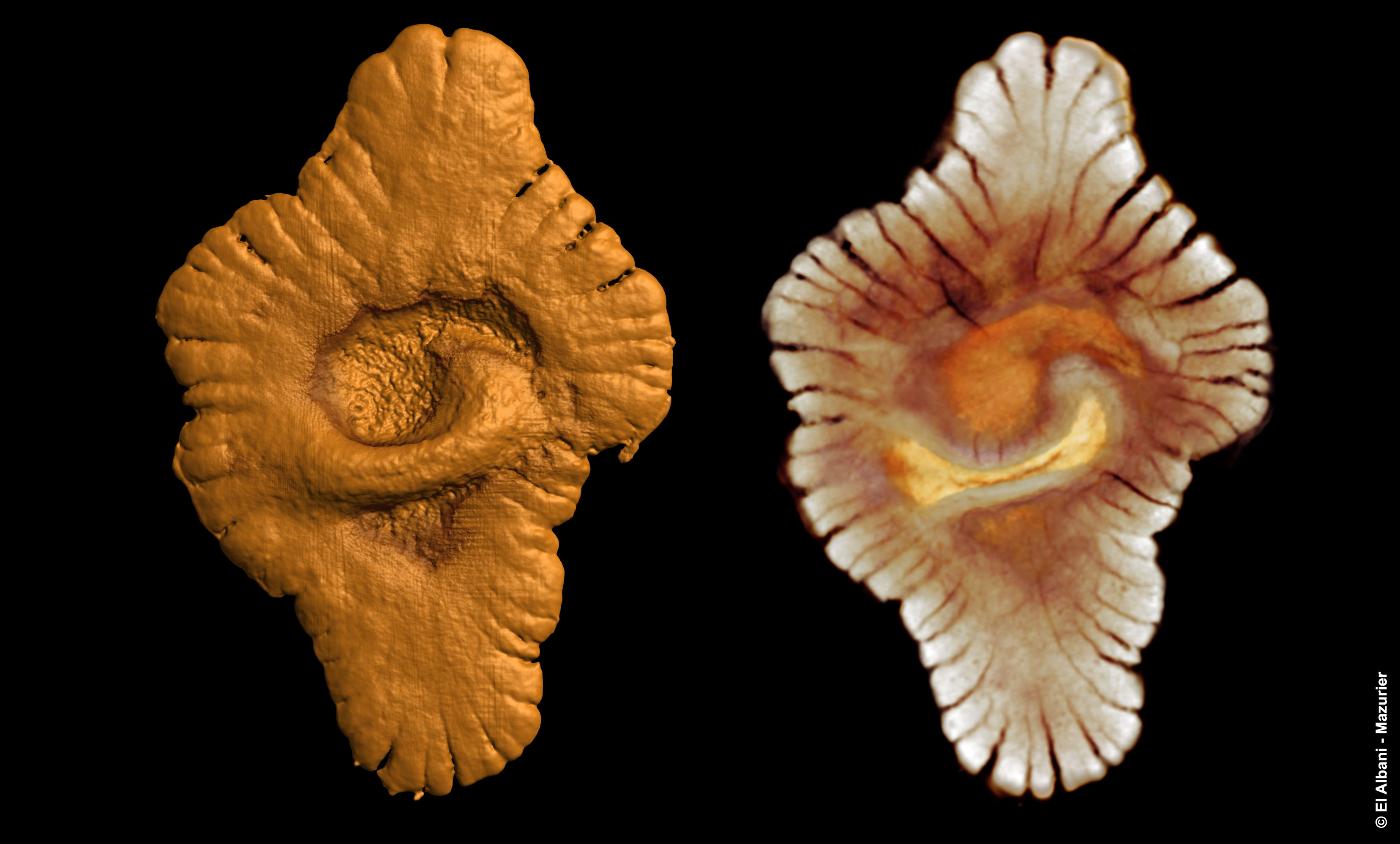In this NewsFlash, we hear about the melanoma stem cells that fuel the growth of tumours, the genes that could mean you'll live to be 100 and the fossils that show the earliest multi-cellular organism. We'll hear the evidence that Sabre-toothed tigers packed a mighty punch, as well as a big bite, and how a new x-ray laser has created "cored" atoms.
In this episode

00:14 - Scientists discover melanoma stem cells
Scientists discover melanoma stem cells
In the world of cancer research, there's growing evidence for cancer stem cells - rogue stem cells that fuel the growth of tumours. When they divide, cancer stem cells produce new stem cells as well as so-called 'bulk' tumour cells. Treatments like radiotherapy and chemotherapy kill off the bulk cells, but don't touch the stem cells, so they carry on growing and the cancer returns. Stem cells have been found in many types of cancer, including breast and bowel cancer, and leukaemia. And now researchers at Stanford University School of Medicine in the US have found them in melanoma - the most dangerous form of skin cancer. Their research was published this week in the journal Nature.
 Led by Alexander Boiko, the researchers were studying the protein molecules on the surface of cells taken from melanoma samples. They found that between 2.5 and 41 per cent of cells had a protein called CD271 on their surface. Using a technique called flow cytometry, they were able to separate out cells carrying this protein, and test their properties.
Led by Alexander Boiko, the researchers were studying the protein molecules on the surface of cells taken from melanoma samples. They found that between 2.5 and 41 per cent of cells had a protein called CD271 on their surface. Using a technique called flow cytometry, they were able to separate out cells carrying this protein, and test their properties.
The researchers transplanted human melanoma cells into mice, comparing cells that carried CD271 with cells lacking the protein. They discovered that cells with CD271 were much more likely to grow into tumours than cells without the protein, suggesting they may have stem cell-like properties.
Here's the clever bit - when the researchers analysed cells from tumours grown from the CD271-positive cells, they found a mixture of human cells - some carried the protein, while others didn't. This told them that the CD271 cells were not only making more stem cells, but making bulk tumour cells too - a classic giveaway of stem cell behaviour.
The discovery of these stem cells helps to explain why many melanomas don't respond to immunotherapy - a treatment that harnesses the patient's immune system to destroy cancer cells. The team discovered that the melanoma stem cells lacked certain proteins that are targeted by current immunotherapy approaches, so the body's immune system can't recognise and kill them, and the cancer comes back.
But now we know that the stem cells do carry CD271, researchers can start working on treatments that target that CD271, or other proteins that are specific to the stem cells. This could lead to powerful new treatments for melanoma that are so urgently needed.

03:09 - Genes for centenarians
Genes for centenarians
Scientists have identified a series of genetic markers capable of predicting, with 77% certainty, who will live to more than 100.
 The study, by Boston University researcher Paola Sabastiani and her colleagues and published in Science, looked at DNA from over 1055 centenarians (who survived beyond the ages of 95-119) and 1267 controls (amongst whom the average age of death was 75).
The study, by Boston University researcher Paola Sabastiani and her colleagues and published in Science, looked at DNA from over 1055 centenarians (who survived beyond the ages of 95-119) and 1267 controls (amongst whom the average age of death was 75).
By comparing the patterns of genetic markers called SNPs - single nucleotide polymorphisms - that are common to the members of each group, the researchers identified 150 such SNPs that strongly co-segregated with longevity.
Applying these markers as a screen to other samples showed that they could predict, with high accuracy, those equipped genetically to live to a very old age. Moreover, these SNPs can now also be used to spotlight genes that confer these abilities, informing our understanding of the genetic basis of ageing, its effects, and perhaps how to better control it.

05:56 - Never arm-wrestle a sabre-toothed tiger
Never arm-wrestle a sabre-toothed tiger
Far from being cute kitties, sabre-toothed tigers were lethal hunters, roaming North and South American until around 10,000 years ago, searching for bisons, camels and other unfortunate animals. Today we know them for their super-sized teeth - they had exceptionally large canines for biting their prey. Now new research published in the journal PloS One suggested that there's more to these feline killing machines than their teeth.
 This is work from Julie Meachen-Samuels and her team in the US, who've been looking at sabre-tooth fossils. They noticed that sabre-tooth tiger canine teeth are oval in cross-section, unlike modern cats, whose teeth are round. Having oval-shaped teeth makes them vulnerable to fracturing and breaking if the animals prey is wriggling - not a good thing for a hunting cat. This led the researchers to think that sabre-tooths may have killed their prey in a different way to modern cats, and not relied quite so much on their impressive teeth.
This is work from Julie Meachen-Samuels and her team in the US, who've been looking at sabre-tooth fossils. They noticed that sabre-tooth tiger canine teeth are oval in cross-section, unlike modern cats, whose teeth are round. Having oval-shaped teeth makes them vulnerable to fracturing and breaking if the animals prey is wriggling - not a good thing for a hunting cat. This led the researchers to think that sabre-tooths may have killed their prey in a different way to modern cats, and not relied quite so much on their impressive teeth.
The researchers measured bones from the fore-limbs of sabre-tooth tigers, and compared them with 28 other cat species living today, from a tiny cat to a tiger. They found that the sabre-tooth limbs were much chunkier and stiffer than expected, with prominent muscle-attachment sites on the bones. This suggests that sabre-tooth tigers had exceptionally powerful and strong forelimbs, compared to today's cats.
The scientists think that sabre-tooth tigers may have used their muscular forelimbs to immobilise their prey, before biting into them. This would have protected their vulnerable teeth, and built up their arms even more. Today's cats have stronger teeth, and weaker forelimbs, so they probably rely more on their teeth for hunting than their ancestors.

08:04 - Oldest evidence for multi-celled life discovered
Oldest evidence for multi-celled life discovered
Scientists working in West Africa have uncovered an incredible clutch of fossils that appear to represent the earliest ever remains of complex life.
The discovery, published in Nature by University of Poitiers, France, researcher Abder El Albani, contains dramatic photographs of the 1cm diameter organisms that were discovered in in southeast Gabon encased in sedimentary rocks, determined isotoptically to be over 2.1 billion years old.
 The fossils, which appear to consist of cooperating colonies of cells, macroscopically resemble fried eggs with a central "body" surrounded by flat sheets or lamellae of tissue which is further divided by a pattern of radial slits. The arrangement of the material suggests that these creatures were growing by adding tissue to their periphery and functioning as a multicellular organism. They do not resemble anything observed previously from this epoch.
The fossils, which appear to consist of cooperating colonies of cells, macroscopically resemble fried eggs with a central "body" surrounded by flat sheets or lamellae of tissue which is further divided by a pattern of radial slits. The arrangement of the material suggests that these creatures were growing by adding tissue to their periphery and functioning as a multicellular organism. They do not resemble anything observed previously from this epoch.
The fossils also contain the chemical signature of sterane, a sterol derivative which is regarded as a hallmark of eukaryotic life, indicating that these organisms were distinct from the more primitive prokayotic life known to have gone before.
Even more intriguing, analysis of the iron composition of the fossilised material also suggests that they were oxygen-using organisms, which fits with the fact that they date from about 200 million years after the "Great Oxidation Event," when the Earth suddenly went aerobic.

10:27 - Coring an Atom with an X-Ray Laser
Coring an Atom with an X-Ray Laser
Dr. Linda Young, Argonne National Laboratory
Chris - Now also this week, researchers in America have used a very powerful x-ray laser to strip away the electrons from an atom of neon. But they also have been able to very carefully strip away only those electrons which are closest to the atom's centre, creating the atomic equivalent of a cored apple. Dr. Linda Young is a distinguished fellow of Argonne National Laboratory which is just outside Chicago and she's with us to tell us how it works. Hello, Linda.
Linda - Hello.
Chris - Welcome to the Naked Scientists. Do tell us if you could, first of all, what is this laser and why is it so special?
 Linda - This is the world's first hard x-ray free electron laser and it produces x-rays that are about a billion times more intense than any other x-ray source before. The intensity is actually equivalent to taking all of the sun's radiation on earth and putting it into 1 square centimetre. So it's an exceedingly powerful x-ray laser.
Linda - This is the world's first hard x-ray free electron laser and it produces x-rays that are about a billion times more intense than any other x-ray source before. The intensity is actually equivalent to taking all of the sun's radiation on earth and putting it into 1 square centimetre. So it's an exceedingly powerful x-ray laser.
Chris - And obviously, you wouldn't use this clinically, but you can use this to probe things like atoms of very, very high resolution. So tell us how you're doing that.
Linda - Yes, that's right. Because this laser is so intense, and all these photons come in such small bursts, you are in fact able to capture motion on the atomic molecular scale within femtoseconds. That's about the time that it takes for molecules to vibrate within larger structures such as proteins. But because we had such an intense laser, and it's the first time anyone had had it, one really wants to understand how that very intense x-ray beam interacts with matter. And so, you might think that if you take a trillion photons and focus it down to a micron or so, you couldn't control at all what's going on in matter. But in fact, we find that we can control how the matter responds by tuning the photon energy of the x-rays, and by tuning the pulse duration in which you deposit those x-ray photons into the atom.
Chris - So tell us about the experimental set up just briefly. What did you actually do?
Linda - Okay, so you take this very intense x-ray beam and you focus it down to about a square micron, into a jet of neon atoms.
Chris - So that's a millionth of a metre we're talking here, isn't it? A thousandth of a millimetre across.
Linda - That's right. And when you do that, you surround that interaction region with a number of detectors that can detect all the products of the reaction. And so, you can detect all the ions that are produced and all the electrons that are produced, and by having these very high resolution detectors, you can tell exactly the mechanism by which the neon atom becomes stripped of its electrons.
Chris - So you fire these very intense x-ray beams into a cloud of atoms and you spray neon, so that's a noble gas, isn't it - very unreactive. What happens to the atoms when they hit with this very intense burst of x-rays?
Linda - Well, that depends on what photon energy you've selected. You can select the photon energy where you hit out the inner electrons first or you can select a photon energy where you just peel away the outer electrons. So, depending on where you are in photon energy, you can do one or the other.
Chris - And how does this inform our understanding of physics and our understanding of atomic structure?
Linda - Actually, what it informs you of is how very intense x-rays interact with matter. Before this x-ray laser was available, we were only ever able to knockout one of the inner electrons in a shot, but now with this very intense x-ray laser, you can knockout both of the inner electrons simultaneously, and that leaves you with this so-called hollow atom or cored atom. That hollow atom has different properties than a normal atom including the possibly advantageous property that when the inner electrons are missing, then the x-ray absorption is decreased, relative to the scattering cross-section, and the scattering cross-section is what forms an image for you to make further molecular movies or images of complex molecules. So, what I would say is that we're just exploring a new regime of x-ray interactions with matter.
Chris - Which is of course going to give you the opportunity to begin to understand and probe whole molecules at a kind of resolution and in a way that we've never seen before. Linda, thank you very much. That's Dr. Linda Young who is from Argonne National Laboratory and she's published that work in the journal Nature this week.









Comments
Add a comment